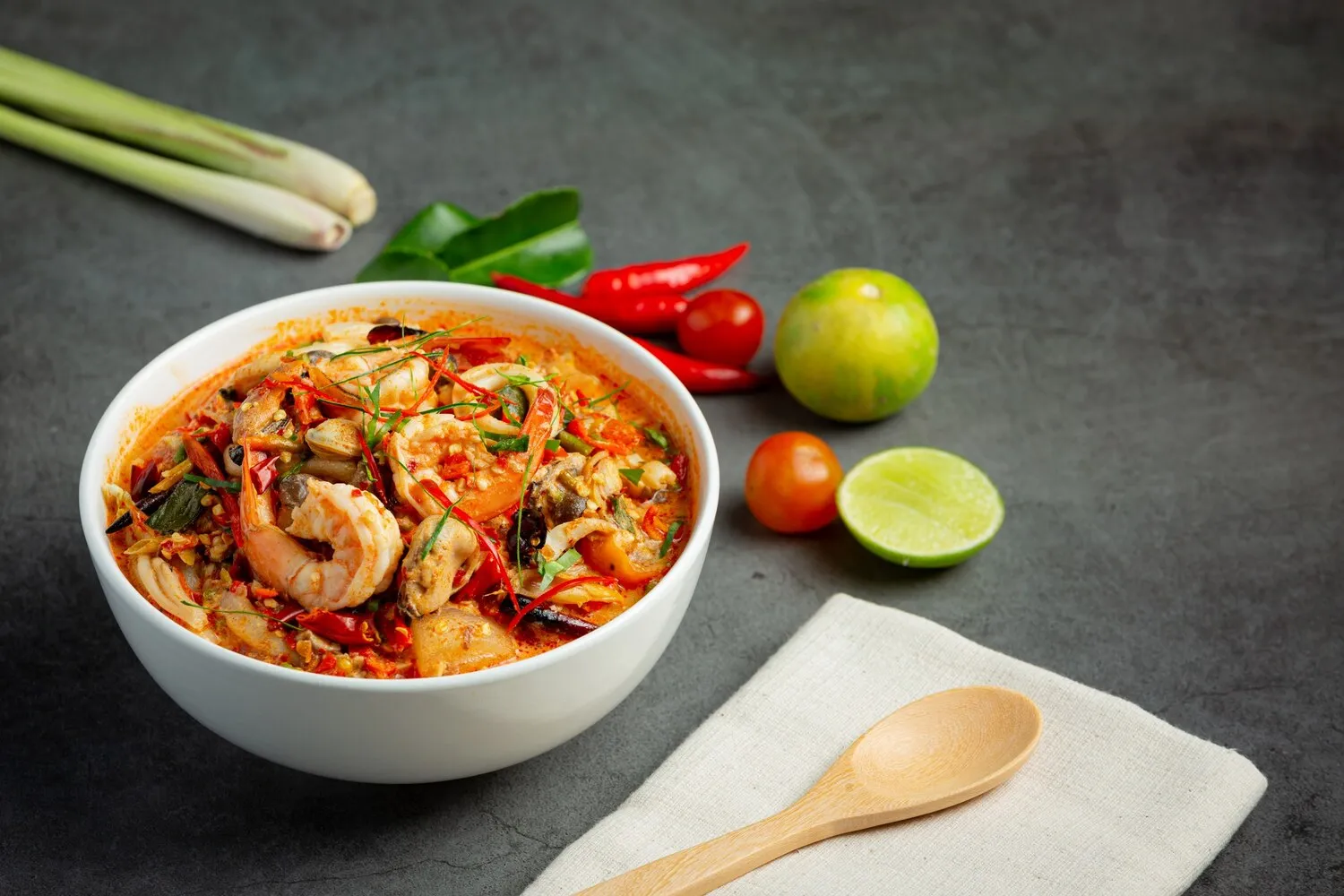
Tom Yum Soup
A hot and sour Thai soup, typically cooked with shrimp. Features fragrant lemongrass, galangal, kaffir lime leaves, shallots, lime juice, fish sauce, and chili peppers.
Nutrition Facts
* The % Daily Value (DV) tells you how much a nutrient in a serving of food contributes to a daily diet. 2,000 calories a day is used for general nutrition advice.
Brown Sugar
Tom Yum's origins are thought to be in Central Thailand. Given the abundance of freshwater shrimp in the region, it’s plausible that the original version of Tom Yum used shrimp as its primary protein. The dish evolved over time, incorporating influences from royal Thai cuisine and regional variations in ingredients.
Tom Yum is more than just a soup; it's an integral part of Thai culture and cuisine, often associated with comfort, healing, and celebratory meals.
Celebratory and Everyday Dish
Tom Yum is enjoyed both as an everyday meal and during special occasions. Its versatile nature allows it to be served as a starter, a main course, or even a remedy for colds.
Regional Variations
Different regions of Thailand have their own variations of Tom Yum, reflecting local ingredients and preferences. For example, Tom Yum Goong (with shrimp) is a classic version, while Tom Yum Gai (with chicken) is another popular option. Some variations include coconut milk for a creamier texture.
Symbol of Thai Cuisine
Tom Yum is often considered one of the most representative dishes of Thai cuisine, showcasing the balance of flavors and the use of fresh, aromatic ingredients that define Thai cooking.
Tom Yum is characterized by its bold, fragrant, and complex flavors. It's a symphony of sour, spicy, salty, and slightly sweet notes.
The key flavors come from lemongrass (citrusy and aromatic), galangal (ginger-like, but more piney), kaffir lime leaves (citrusy and floral), fish sauce (salty and umami), chilies (spicy), and lime juice (sour). Mushrooms add an earthy note, while tomatoes contribute sweetness and acidity. The protein, which can be shrimp, chicken, pork, or tofu, absorbs these flavors, creating a harmonious blend.
Bruise the Aromatics
Bruise the lemongrass and galangal before adding them to the soup to release their essential oils and enhance their flavor.
Don't Overcook the Protein
Add the protein towards the end of the cooking process to prevent it from becoming tough or rubbery. Shrimp, in particular, cooks very quickly.
Adjust the Spice Level
Adjust the number of chilies to your desired level of spiciness. You can use fresh chilies, chili paste, or chili oil.
Balance the Flavors
Taste the soup frequently and adjust the amount of fish sauce, lime juice, and sugar to achieve the perfect balance of salty, sour, spicy, and sweet flavors.
Use Authentic Ingredients
Whenever possible, use authentic Thai ingredients such as Thai bird chilies, nam pla (fish sauce), and galangal to create a truly authentic Tom Yum experience.
Explore additional Soup dishes and restaurants
Explore SoupDiscover top dining spots and culinary experiences in São Paulo.
Explore São PauloLearn more about the food culture, restaurant scene, and culinary heritage of Brazil.
Explore Brazil